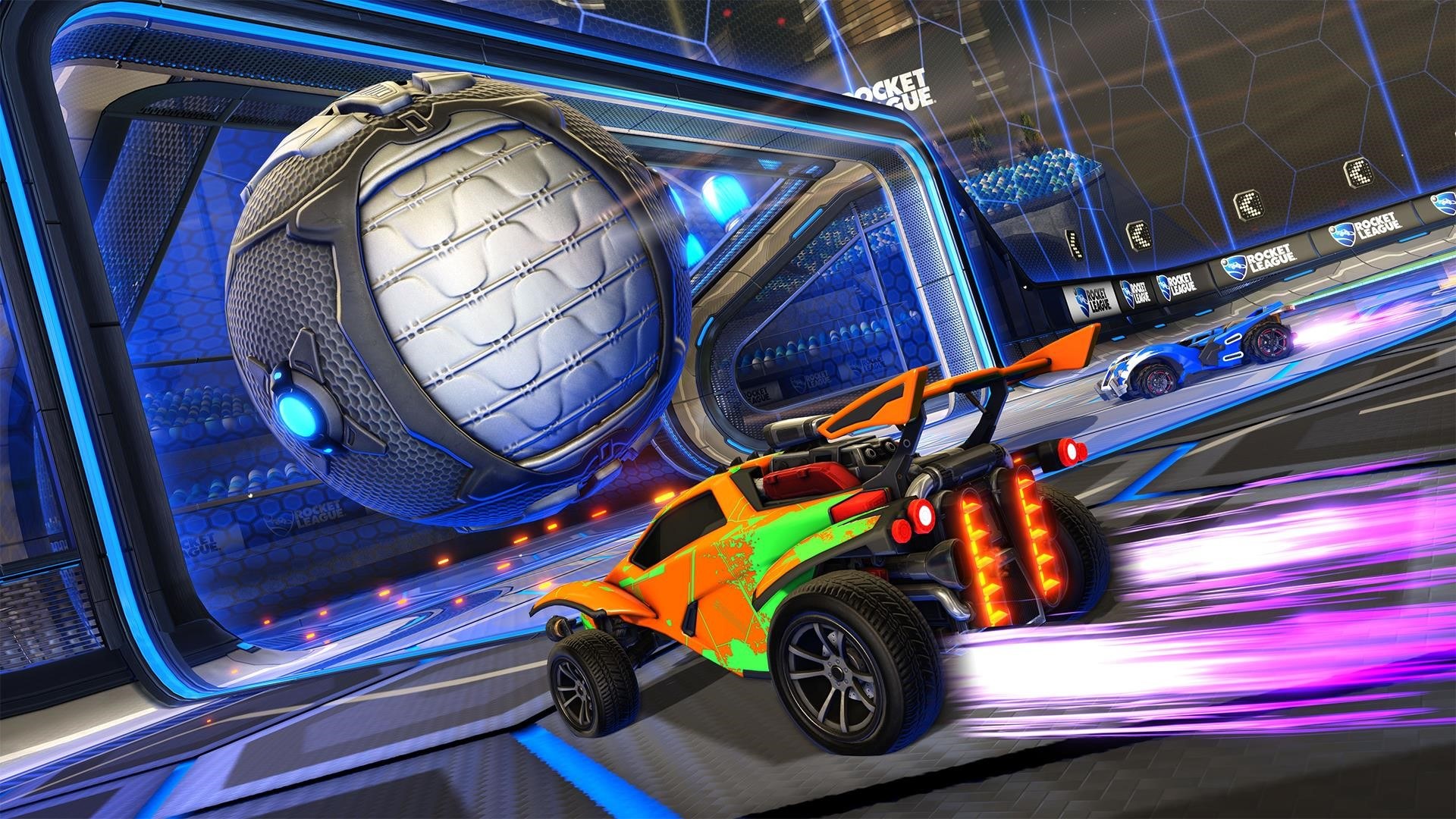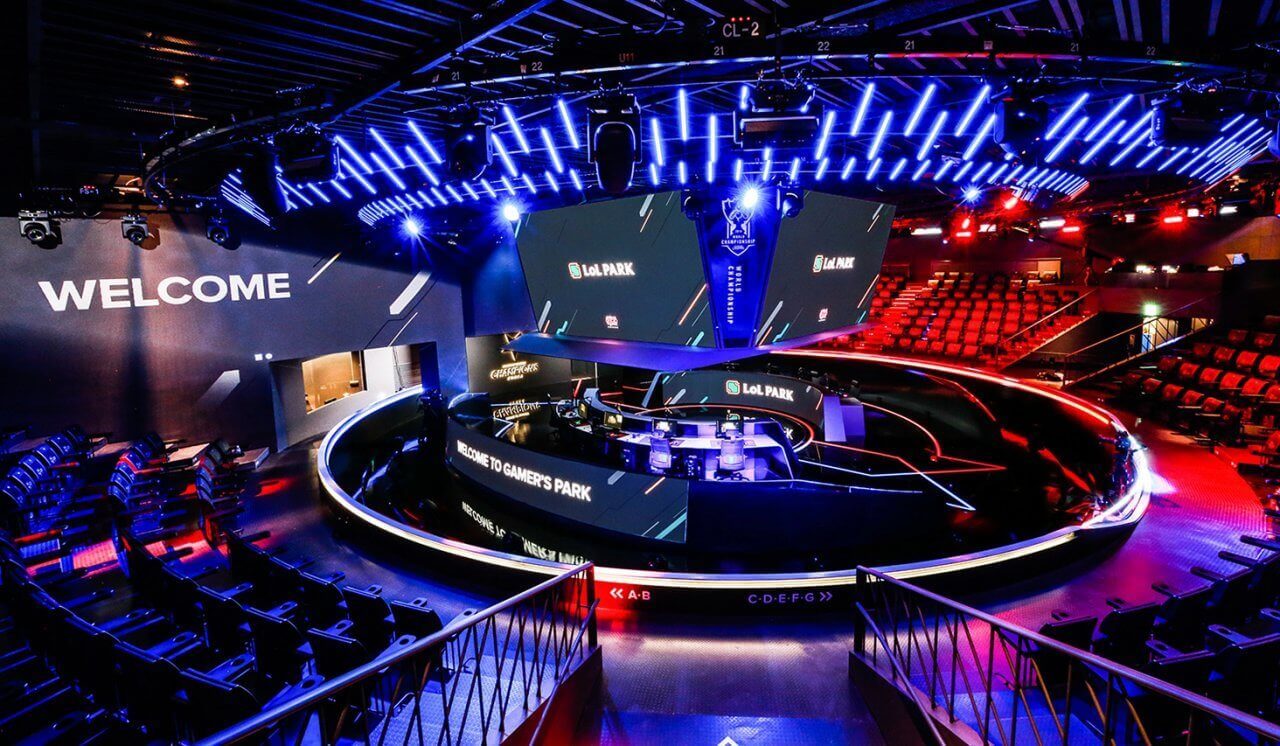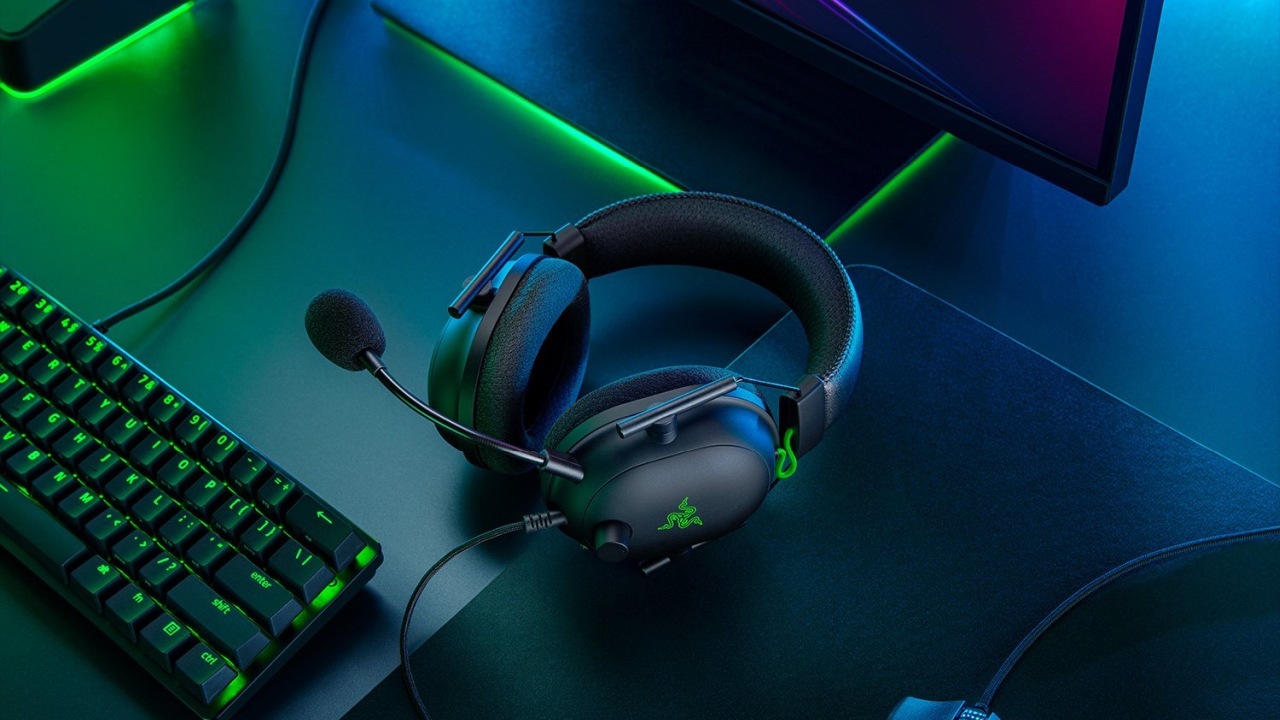
Valorant is a tactical shooter and therefore, more so than in any other FPS genre, map callouts are crucial. Team communication might be the most important skill to master when it comes to winning and good communication starts with map knowledge:
Knowledge is power in Valorant. Yes, killing the enemy team wins you the round but the primary objective is planting and defending the Spike. To do that, information is crucial:
Who has the spike? Which site are they attacking or which side are they defending and with how many people? This is reflected in the hero’s abilities, which are mostly just utility and designed to gather information or make your enemy's reconnaissance more difficult.
Simplify, less is more
All that information is useless if you can’t communicate it. In a game like Valorant, though, hearing the enemy is just as important as seeing them. Therefore, long-winded sentences can be more distracting than helpful. The key is knowing the map callouts to convey information quickly and accurately.

Let’s imagine we’re playing Defense on Bind. On a well-communicating team, you might hear a sentence such as:
“3 B-long, no spike.”
A perfect map callout. It tells the defenders everything they need to know: There are 3 attackers on the long corridor leading up to B, but they don’t have the spike. This means these attackers are a low priority and just trying to bait the defense into defending B-site while the others are planting on A-site.
Now, the defense might have originally sent 4 people to defend B-site with just one agent scoping out A-site. With his information, however, the defense now knows what to prioritize. They can maybe leave one guy at B to fool and engage the enemy and waste their time, while everybody else commits to A where they then have a 4v2 advantage and might secure the Spike.
In an alternative scenario, the one sole person that is lurking on A-site might have a map callout that goes like:
“2 Hookah with Spike”
Now, the one guy that’s gathering information on A-site has just told his team everything they need to know: The bomb is here and it’s just two people. His teammates can now rush over for the numbers advantage and ignore the three attackers on B. They have the advantage now, just by knowing where the Spike is. All with a simple four-word map callout.
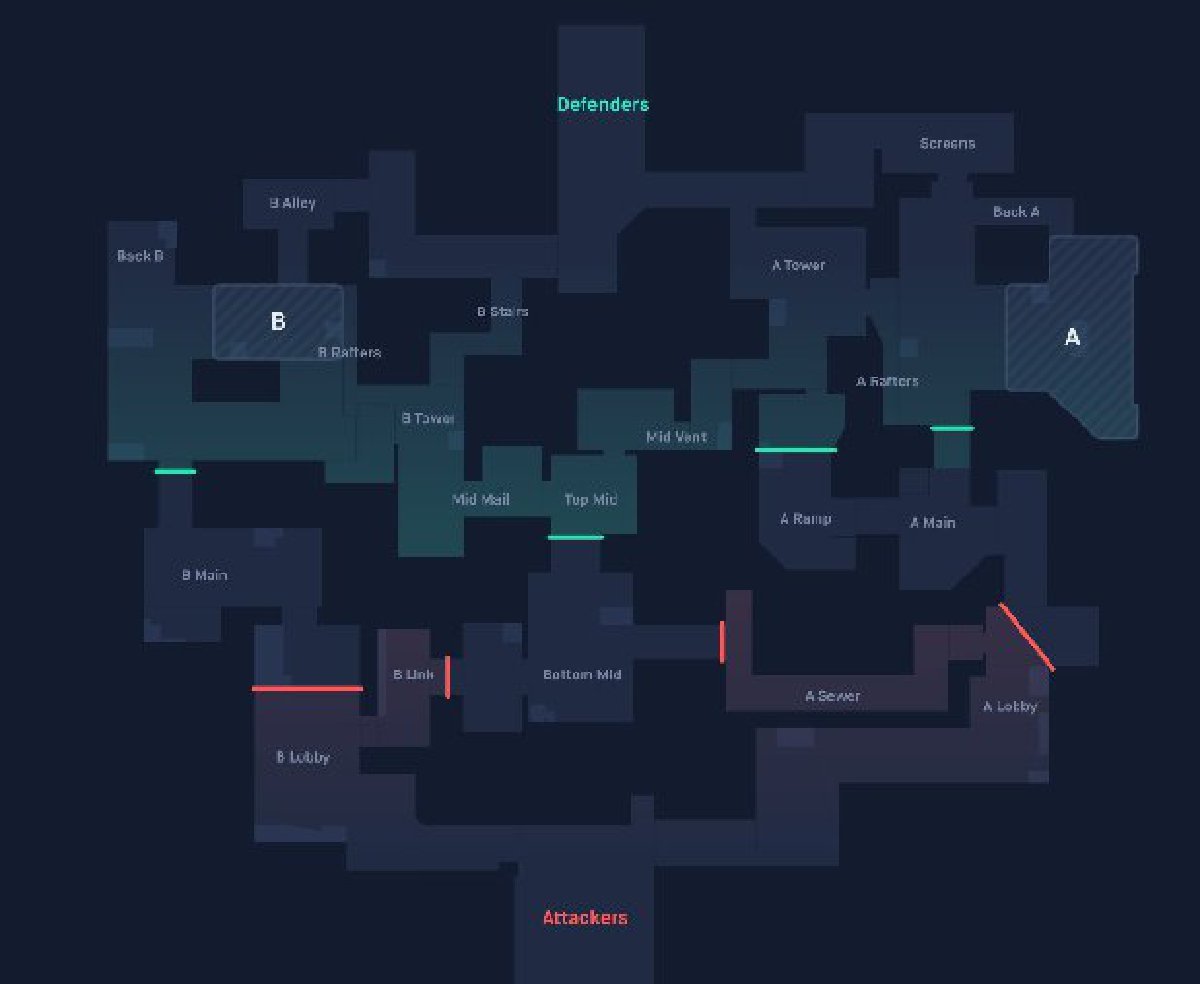
There is simply no way of relaying information in a useful way without getting used to the map callouts.
What to keep in mind
It is also important to remember certain key facts:
- Attackers and Defenders always spawn in the same spot.
- After 12 rounds, whoever attacked first has to defend and defenders become attackers.
- The primary objective is planting/securing the Spike. Killing the enemy team is just one way to do it.
- The Spike takes 4 seconds to plant, is on a 45-second timer until it detonates and takes 7 seconds to defuse.
- A round in Valorant lasts 100 seconds (1 Minute, 40 seconds).
- Attackers win conditions: Detonating the spike or eliminating the defenders.
- Defenders win conditions: Defusing the Spike, stopping it from being planted or eliminating attackers.
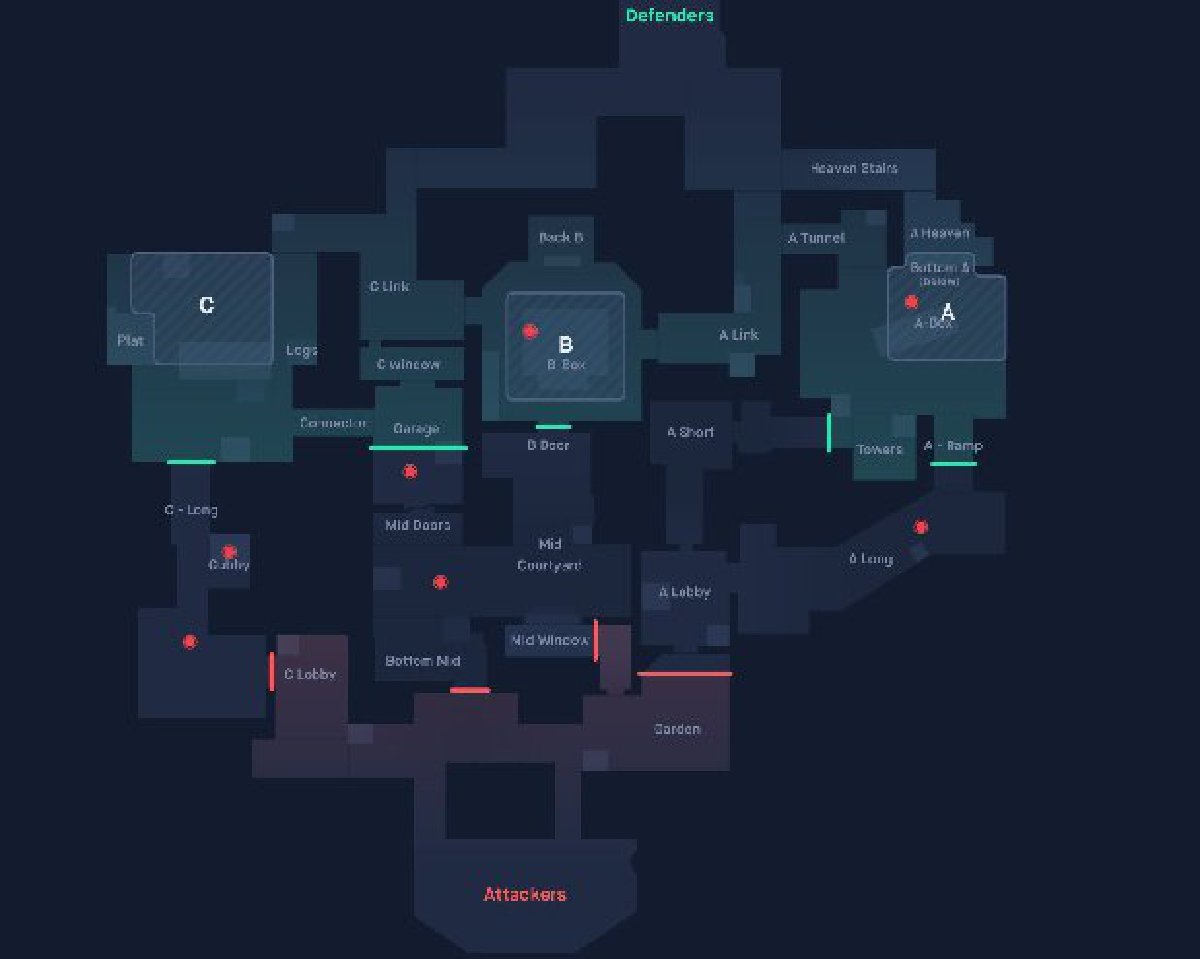
Strategizing is more than half the game in Valorant. Sometimes it is more useful to gather information and relay it to your teammates than to go for the kill. Sometimes the better play is to purposefully waste time. Sometimes, when it comes to Valorant, you simply have to think before you shoot.
There are many more tips and tricks that can help you become better at Valorant, such as how the economy works or how much damage each weapon does.
- WATCH NOW: What is Valorant’s economy?
For now, refer to the images within this article to get accustomed to the map callouts and refer to EarlyGame for everything else regarding Valorant.






















